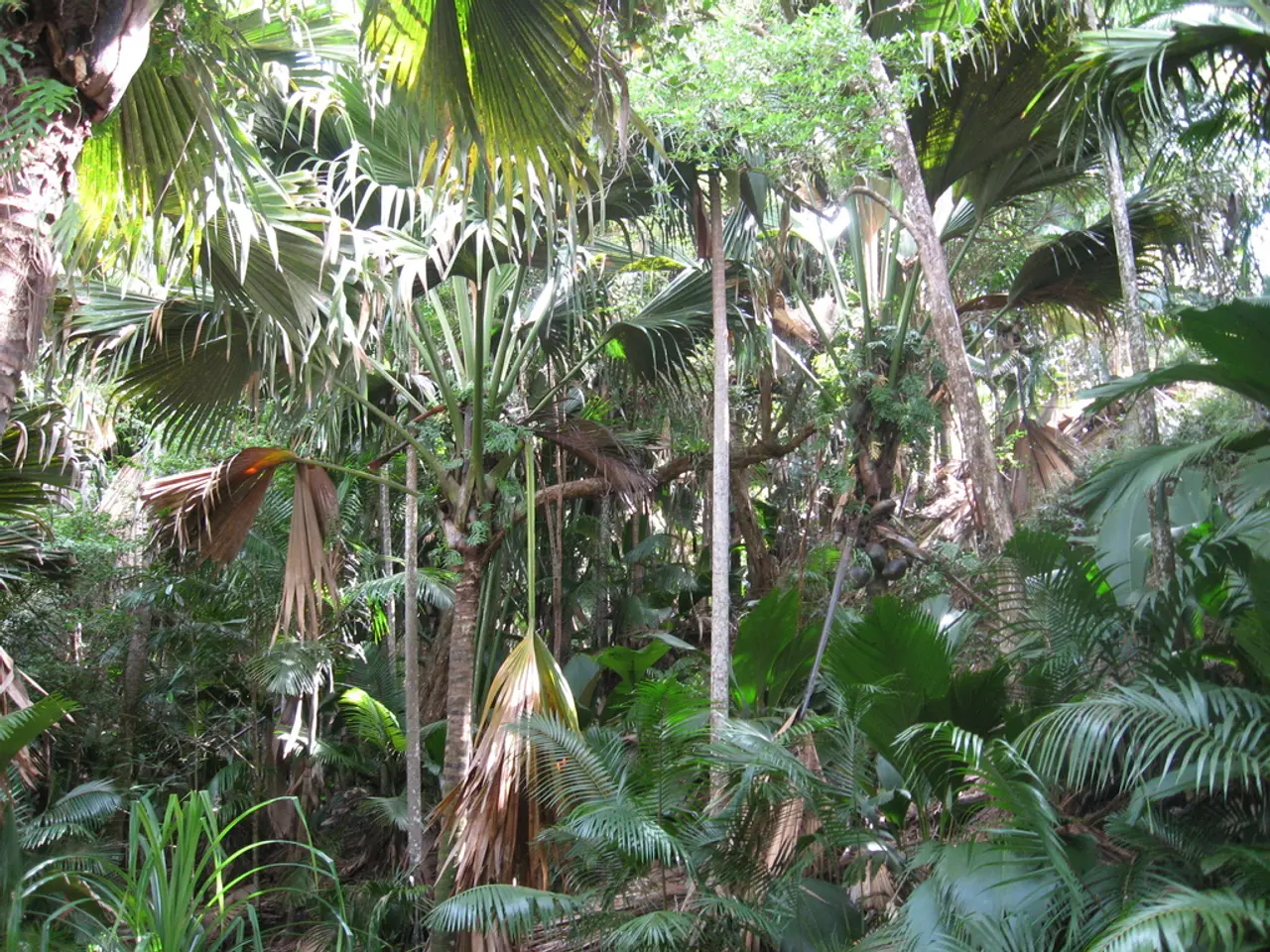Encouraging Variety in Flora and Fauna for Climate Resilience in Permaculture Systems
Promoting Biodiversity through Permaculture: A Sustainable Solution for Climate Adaptation
As the world grapples with the worsening effects of climate change, the role of permaculture in promoting biodiversity and fostering climate resilience is gaining recognition. Here's how permaculture is making a difference:
Ecosystem Restoration
Permaculture focuses on restoring degraded landscapes and increasing plant species diversity, leading to healthier, more resilient ecosystems that can better withstand the impacts of climate change [1].
Improving Soil Health
Diverse plant species and organic practices like mulching and composting boost soil organic matter, enabling greater carbon storage in soils, thereby helping to reduce atmospheric CO2 [1][2].
Agroforestry and Perennial Polycultures
By combining trees with crops and promoting long-lived diverse plants, permaculture systems mimic natural ecosystems, capturing more carbon and providing habitats for diverse organisms [1].
Crop Rotation and Intercropping
Growing multiple crops together and rotating them reduces pests, diseases, and soil degradation while encouraging a variety of beneficial species such as pollinators [2][4].
Water Management
Techniques like rainwater harvesting and swales support diverse plant life and reduce climate vulnerability, maintaining ecosystem functions that support biodiversity [1].
Diversity and Succession Principles
Mixing plants with different root depths, water needs, and bloom times strengthens overall system resilience, preventing monocultures that are less climate-resilient and more prone to pests [4].
By enhancing biodiversity, permaculture systems improve nutrient cycling, carbon sequestration, and climate resilience, making agricultural landscapes more sustainable and adaptive to changing climate conditions [1][3][4].
Embracing Permaculture in Mainstream Agriculture
As the future of biodiversity in climate adaptation involves more permaculture in mainstream agriculture, diverse permaculture systems will become increasingly valuable [2]. Resources for learning more about biodiversity in permaculture include permaculture design courses, the Permaculture Research Institute, books by permaculture pioneers, local permaculture groups and demonstration sites, and community gardens [3].
Community Engagement and Local Conservation
Community engagement is essential for saving biodiversity in permaculture. It helps communities become self-sufficient, grow their own food, and protect the environment [3]. By joining local conservation projects, we can help our ecosystems thrive [5]. Getting local communities involved in saving nature uses local knowledge and makes projects last longer. It also makes people feel like they own the place and want to take care of it [6].
Policy Support
Policy support is crucial for promoting biodiversity through permaculture. This includes incentives for sustainable agriculture and laws protecting biodiversity. The United Nations Food and Agriculture Organization (FAO) supports agroecology, which shares permaculture's principles [7].
Global Initiatives
Governments are setting big goals to protect biodiversity. The Global Biodiversity Framework (GBF) aims to stop biodiversity loss and help nature recover. They also want to ensure 30% of land and sea are protected by 2030 to help biodiversity and store carbon [8].
Recent data shows a rise in nature-based solutions (NbS) in climate policies. The NDC Partnership found 96 out of 101 countries use NbS in their climate plans. Also, 84 countries have set targets for reducing greenhouse gases using NbS, and 92 countries aim to adapt to climate change with NbS [9].
Starting a community garden is a wonderful way to connect with nature, learn about biodiversity, and help feed our communities [10]. In eastern and southern Africa, community efforts have made a big difference in protecting wildlife, such as the Luangwa Project in Zambia. In East Africa, projects like Million Trees NYC and the Portland Urban Forest Project show how to mix conservation with economic growth [11].
By tackling challenges like invasive species, climate change, the fight for land, and a knowledge gap, we can fully use permaculture's potential to combat climate change and promote biodiversity [12].
References: 1. Biodiversity and Permaculture 2. Permaculture and Biodiversity 3. Resources for Learning More About Biodiversity in Permaculture 4. Principles of Permaculture Design 5. Community Engagement for Saving Biodiversity in Permaculture 6. The Role of Local Communities in Saving Nature 7. FAO Supports Agroecology 8. Global Biodiversity Framework 9. Nature-Based Solutions in Climate Policies 10. Starting a Community Garden 11. Community Conservation Projects 12. Challenges Facing Permaculture





